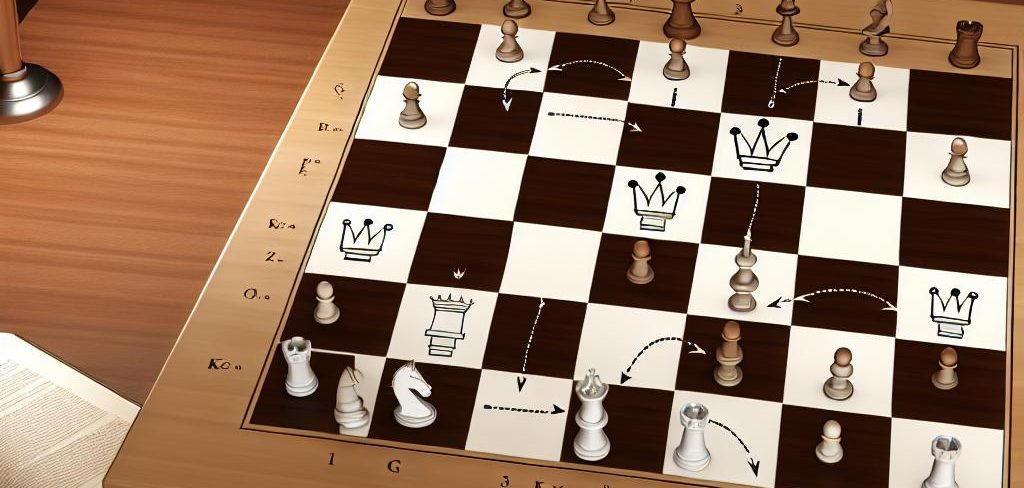Understanding Rook Endgames
Rook endgames hold significant importance in the realm of chess, often serving as the deciding factor in a match’s outcome. Mastering this phase of the game involves strategic maneuvering and precise calculation to gain a winning edge over your opponent. This piece seeks to delve deeply into common scenarios and techniques essential for excelling in this pivotal part of chess.
Fundamental Scenarios
In the labyrinth of rook endgames, several fundamental scenarios tend to manifest repeatedly. Acquiring the knowledge to handle these scenarios adeptly can notably elevate your endgame prowess.
The Lucena Position
A hallmark of winning techniques in rook endgames, the Lucena Position emerges when your rook is behind a passed pawn. Mastering this scenario involves steering your pieces into strategic positions that force your opponent toward making suboptimal moves, thus ensuring victory. The essence lies in creating a bridge strategy that allows your king to safely escort the pawn to promotion.
The Philidor Position
This is a defensive arrangement where the side on defense can secure a draw. The crux of the Philidor Position is to forestall the opponent’s king from escaping the back rank. This position becomes indispensable when aiming to neutralize the advantage of a stronger opponent, maintaining the balance in the face of pressure.
Rook vs. Pawn
Rook versus pawn scenarios form another critical element of endgames. The dynamic involves one side having a rook, with the other wielding one or more advanced pawns. Typically, a lone pawn obstructed by a rook usually culminates in a win for the side possessing the rook, except when the pawn reaches the sixth rank, posing a potential threat by forcing a draw or even converting into a win.
Key Techniques in Rook Endgames
Achieving mastery in rook endgames demands a profound grasp of specific techniques designed to either secure a win or maintain a draw.
1. Active Rook
Ensuring that your rook remains active is crucial in the endgame phase. Activity generally revolves around the rook’s dominance over open files, its ability to launch attacks on enemy pawns, and its capacity to restrict the opposing king’s mobility. The adage “an active rook is a happy rook” is often emphasized by top-tier players, highlighting that an active rook can exert substantial control over the board and considerably limit the opponent’s strategic options.
2. The Importance of the King
In endgame strategies, the king evolves from a passive role to become an integral attacker or defender. Particularly in rook endgames, deploying your king forward to support a pawn’s promotion proves to be a pivotal tactic. Conversely, while on defense, maintaining the king ahead of the opponent’s pawns or ideally positioned centrally can effectively disrupt your adversary’s plans, potentially steering the match toward a favorable outcome.
Practical Tips
The deployment of these techniques mandates thorough practice and acute attention to detail. Presented below are practical insights designed to refine your execution skills:
Anticipate Zugzwang
Zugzwang emerges as a scenario where any move made leads to a worsening position. Developing the acumen to identify opportunities for inducing zugzwang in your opponent is a crucial skill, often dictating the difference between a draw and a win.
Use of Tempo
Astute players harness waiting moves to compel the opponent into committing erroneous moves, thereby gaining an invaluable tempo in the endgame. This subtle manipulation can lead to seizing control of the board, eventually skewing the balance of power in your favor.
Control of the 7th Rank
Commanding the 7th rank with your rook can significantly constrain the opponent’s king movement, serving as an efficient launchpad for advancing attacks on pawns. The strategic occupation of the 7th rank often forces the opponent into making hasty, ill-advised decisions.
Further Learning Resources
For individuals aspiring to deepen their expertise in rook endgames, various resources are available. Books penned by renowned chess authors offer detailed insights and strategies. Additionally, instructional videos by grandmasters provide visual learning experiences that can enhance understanding considerably. Various dedicated websites present interactive puzzles and in-depth analysis of rook endgames, furnishing players with the opportunity to engage in simulated practice.
Furthermore, studying classic endgame scenarios through historical games and using sophisticated chess software to mimic diverse scenarios can significantly bolster comprehension, allowing players to gain an edge in this critical segment of chess. Online platforms also provide communities and forums where players can exchange strategies and seek advice, fostering an enriched learning environment.
Overall, rook endgames demand rigorous study, practice, and application of strategic wisdom. By understanding and mastering the principles discussed above, players can effectively transform their approach to rook endgames, improving their overall performance and achieving mastery in chess.



